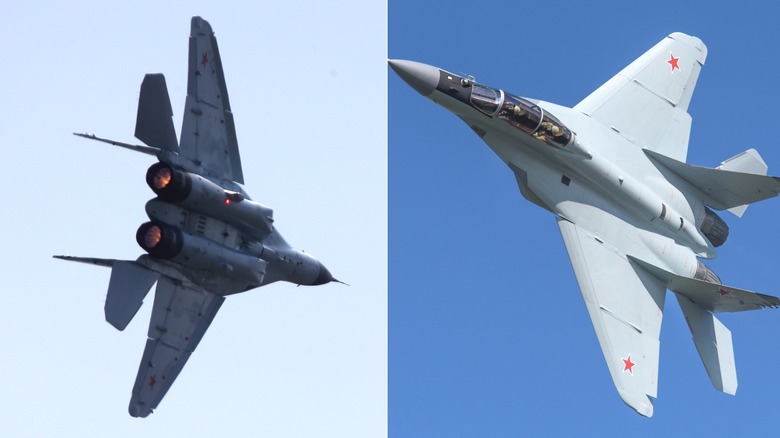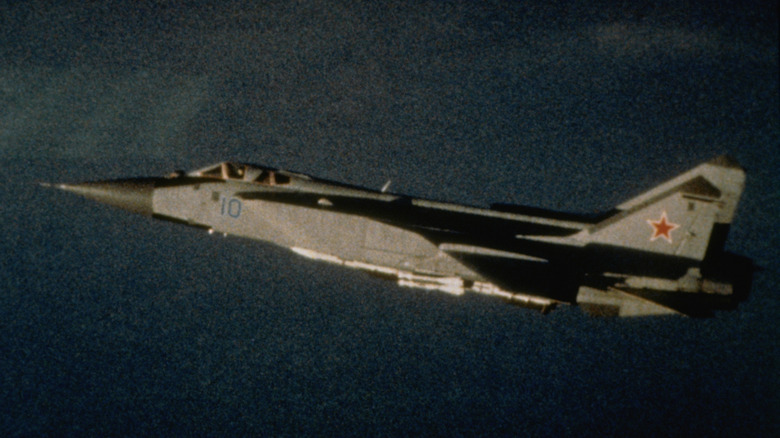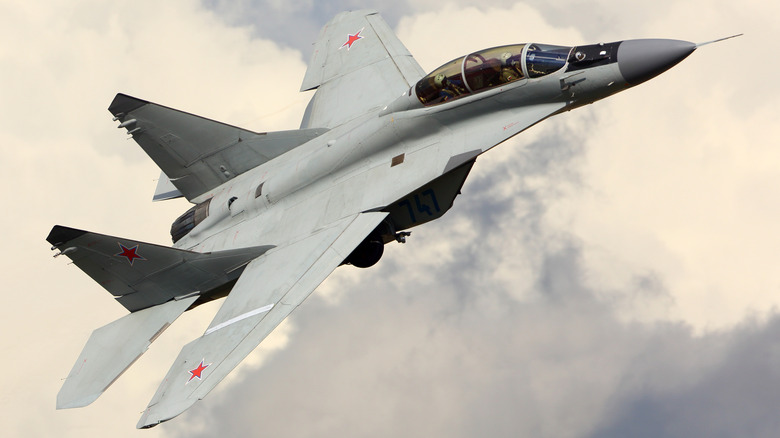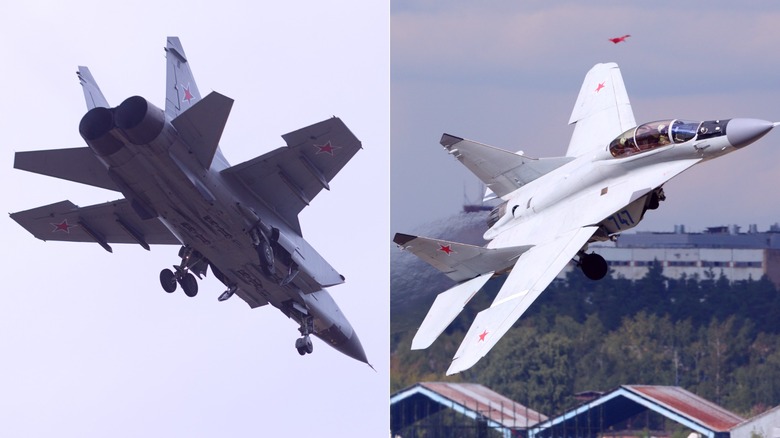Differences Between MiG 31 & MiG 35 Fighter Jets
The MiG-31 and MiG-35 are Russian multirole fighters introduced in wildly different eras. The MiG-31 is a Soviet-era fighter that first flew for the U.S.S.R. in 1981, so it's been around for close to 50 years. Conversely, the MiG-35 is a Russian Federation aircraft that first entered service in 2019, and while you might think these two aircraft are incredibly different due to the time periods they were made, that couldn't be further from the truth, as they're some of the most advanced fighter jets Russia has produced.
Both the MiG-31 and MiG-35 continue to operate in Russia and a plethora of nations the Russian Federation either directly supports or sells arms to. Older aircraft like the MiG-31 are considered legacy aircraft but still bring a lot to the table. Thanks to modernization efforts, it's been able to continue flying in and out of combat operations for nearly half a century.
Comparatively, the MiG-35 is newer, flashier, and shinier — it's the newest toy to come out of the Mikoyan design group, and it includes all the bells and whistles found on comparable 4th-generation aircraft. Incidentally, the MiG-31 is also a 4th-generation aircraft, though due to refits and upgrades, it's technically a 4+ generation, while the MiG-35 is a 4++ generation. Regardless, the two aircraft are remarkably similar, leading many to wonder how they compare.
What is the MiG-31?
The MiG-31 Foxhound is an improvement on the MiG-25, the plane that inspired the United States to develop the American F-15 Eagle. Improvements to aircraft design included upgrades and lessons learned to make the MiG-31 a deadlier aircraft when it was released more than a decade after its predecessor. The MiG-31 includes numerous features that make it a versatile and deadly dogfighter, with its most impressive feature being speed.
While the MiG-25 was faster, the MiG-31 is no slouch, as it can fly up to Mach 2.83, or over 2,000 mph, though it could theoretically exceed this speed. This is exceptionally fast, and it's made the MiG-31 one of the fastest combat aircraft still in service today. Speed is only one aspect of the MiG-31's features, and its operational ceiling is also an advantage, thanks to its ability to cruise at its highest altitude of 123,523.62 feet. For comparison, the SR-71 hypersonic spy plane flew at a max altitude of 85,068 feet.
Russia continued operating MiG-31s for decades, and efforts to replace it with a modern aircraft didn't begin until 2019. Ultimately, the U.S.S.R. and Russian Federation produced around 500 MiG-31s, with 370 operating for Russia and 30 flying for the Kazakhstan Air Force. Syria also operates MiG-31s, as do several of Russia's allies throughout the world, making the MiG-31 an old but continuously operating fighter with advanced capabilities in a variety of theaters.
What is the MiG-35?
The MiG-35 is technically an advanced variant of the preexisting MiG-29, so it's based on that aircraft's design. It includes several variants, including a single-seat model, the MiG-35, and a dual-seat design, the MiG-35D. It entered active service in 2019, though development began more than a decade earlier. Since its introduction, only six MiG-35s have been built, and many in the West consider the aircraft to be a failed design that will soon be replaced by the planned sixth-generation MiG-41, which is set to replace it and the MiG-31 by the 2030s.
Despite this, the MiG-35 isn't necessarily a bad aircraft, as it comes jam-packed with diverse capabilities that make it an effective multirole fighter. The MiG-35 has a top speed of Mach 2.25, or 1,726.35 mph. Additionally, it has a service ceiling of 57,415 feet and has excellent maneuverability for dogfighting, making it an air superiority fighter. It can track up to 30 targets with its radar and target up to six bogeys simultaneously.
The MiG-35 features numerous upgrades and advancements that make it rival comparable fourth-generation aircraft. While Russia appears to have largely dumped the design and left it behind, it's impossible to discount the incredible advancements that went into its design and operation. Regardless, the MiG-35's service history is limited, as it was introduced only a short time ago in limited numbers.
What are their key differences?
There are several notable key differences between the MiG-31 and MiG-35. Some are obvious and relate to the number produced. More than 500 MiG-31s have been produced, while half a dozen MiG-35s currently fly for Russia. Outside of numbers, speed is an obvious difference between the two aircraft. The MiG-31 is considerably faster than its successor, which is still an admittedly fast aircraft.
Altitude is another metric that sets the two aircraft apart, as the MiG-31 can fly at nearly twice the altitude of the MiG-35. Granted, this capability isn't part of the MiG-31's standard flight operations, but the ability to cruise at incredibly high altitudes remains via its service ceiling of 67,000 feet. You begin to see the differences favor the MiG-35 when you look at aspects of its avionics and electronics. Specifically, the MiG-35 has an improved radar system.
The MiG-35 features an Active Electronically Scanned Array (AESA) radar, making it the first Russian fighter equipped with an AESA radar. Conversely, the MiG-31's radar, which has been upgraded since its introduction, isn't as capable as its successor's system. Other aspects like armament and defense capabilities are comparable, so when you add it all up, the MiG-31 is arguably the better fighter for its speed, ceiling, and operational history, which the MiG-35 lacks due to its minimal performance history and low production numbers.



